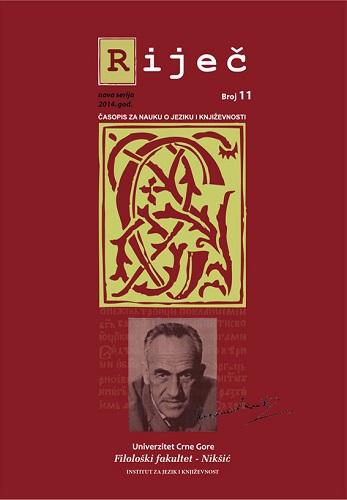Dvojnost u Mallarméovoj eklogi Faunovo poslijepodne (L'après-midi d'un faune)
Duality in Mallarmé‘S Poem The Afternoon of the Faun
Author(s): Frano VrančićSubject(s): French Literature, Theory of Literature
Published by: Filološki fakultet, Nikšić
Keywords: faun; nymphs; Herodias; duality; transcendentalism; animality; art
Summary/Abstract: Myths have always been treated in French literature so they remain a source of poetic inspiration in the nineteenth century. However, whenever a figure of faun is mentioned, Stephane Mallarmé‘s poem The Afternoon of the Faun (L’Après midi d’un faune) comes under the spotlight. Namely, this very mythical figure fills him with a strange admiration. The faun is in every respect a hybrid being especially from a physical point of view due to its paws and horns as well as from spiritual viewpoint, for it hunts after nymphs and is a representative of desire. Furthermore, the faun owns a flute and hence belongs to the art. Moreover, he represents a split between sexual appetite and the art. A beast inside the faun boosts his eroticism whereas the flute draws him towards art. At the same time, it is attracted by the art as well as erotic instincts i.e. by the nymph and a poetry or music. In addition, duality can be seen not only in poem‘s scenery or nymphs but also in the faun‘s hesitation between two worlds and two realities as well as in literary and meta poetic ideas the poem conveys. Eventually, the faun represents a kind of living synthesis of two previously mentioned poles. This synthesis concerns all levels of duality i.e. the man and the beast, the soul and the body. The faun chosen by Mallarmé reconciles opposite poles bringing peace and harmony to a human being.
Journal: Riječ
- Issue Year: 2014
- Issue No: 11
- Page Range: 231-252
- Page Count: 22
- Language: Serbian

